|
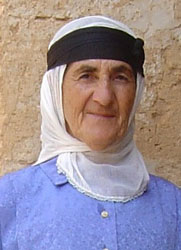 Last Christian woman in Habsus
Habsus or Habsnas is situated to the west of the main road from the town of Midyat to the historic site of Hasankeyf on the river Tigris. A narrow side-road, unpaved and hardly more than a sandy track, winds through the hills towards the village. The Mor Shemun church of Habsus is visible from afar, as soon as one reaches the top of the last hill overlooking the village. The church stands on the far edge of the village, it looks like an isolated fortress and there is nobody around to welcome the unexpected visitor. Habsus has been taken over by Kurdish families, who occupy the grey houses with their flat roofs. They have erected their own landmark – a large and recently built mosque that dominates the village centre with its massive walls and its high minaret.
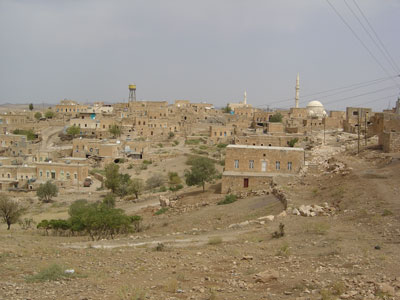 Habsus village with mosque and Mor Shemun church in the background
The church of Mor Shemun honours the memory of an eighth century saint. Mor Shemun or Saint Simon was born in Habsus and he became one of the most renowned abbots of the Mor Gabriel monastery, nowadays the most important centre of Syriac Orthodox Christianity in Tur Abdin. He got known as Shemun d-Zayte, Simon of the Olive Trees, because he arranged for the planting of thousands of olive trees on the plain close to Tur Abdin. Thanks to this project and other activities of Shemun the whole region enjoyed a last period of prosperity in the late eighth century.
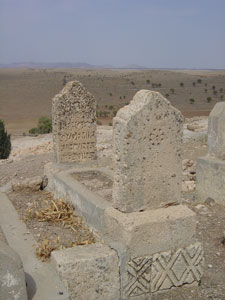 Habsus graveyard
The Kurdish mukhtar or mayor of Habsus has finally noticed the visitor. He offers me water – lukewarm and dubious – and tea – hot and harmless – and sends his youngest daughter to look for the only person who is familiar with what the foreigner wants to see. There she comes at last, the last Syriac Orthodox Christian of Habsus, an old woman in Kurdish clothing. She wears a long blue dress and a white headscarf and her name is Nissani Abdullah. She only speaks Kurdish and her native Turoyo, the Neo-Aramaic idiom of Tur Abdin, but her smile means most welcome and together we follow the cobbled path in the shadow of the houses at the edge of the village. It is a steep climb over rocks and stones towards the site on a ridge above Habsus.
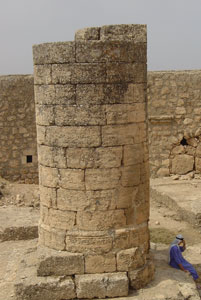 Column in courtyard of Mor Lozoor
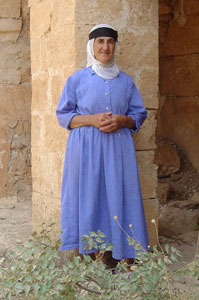 Nissani in courtyard Mor Lozoor
Solitude is a state of mind for travellers. Nissani doesn’t travel around, she has a whole world to preserve in her own village, she is indeed the last Syriac Orthodox Christian of Habsus.
Text & illustrations - ATH
|

 Homeland
Homeland  Turkey
Turkey  Tur Abdin
Tur Abdin  Habsus in Tur Abdin
Habsus in Tur Abdin

 Homeland
Homeland  Turkey
Turkey  Tur Abdin
Tur Abdin  Habsus in Tur Abdin
Habsus in Tur Abdin